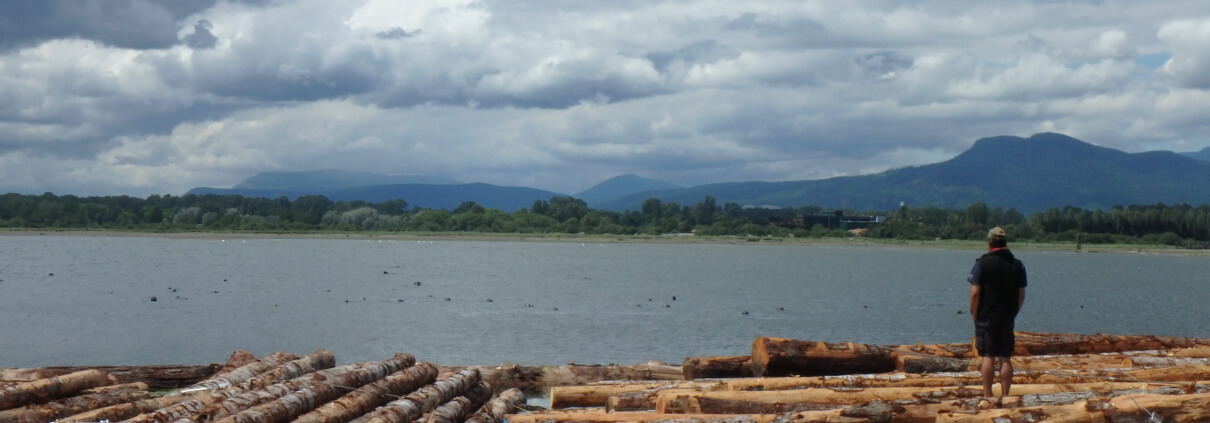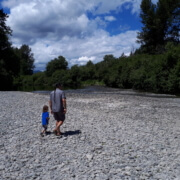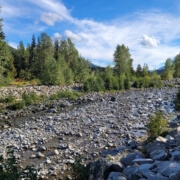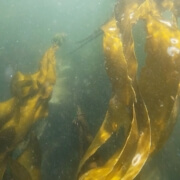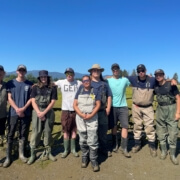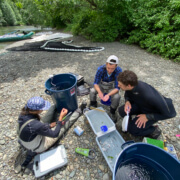Logs in B.C.’s bays: do booms influence salmon survival?
There’s an extensive history of log storage along B.C. coastlines.
Bays and estuaries have historically served as ideal locations for transport and access to sawmills. Log booms, the orderly storage of floating logs into rafts, are used to support the transit and inwater storage of the wood.
Those same bays and estuaries are critical migratory corridors for juvenile salmon during their spring outmigration to the sea and as adults returning to freshwater habitats to spawn. In the fall, returning adult salmon “stage” in estuaries as their bodies adapt to the freshwater transition. They also must wait for the arrival of ideal freshwater conditions — such as sufficient water flow and suitable water temperature — to signal them to enter their natal rivers and streams.
The Salish Sea Marine Survival Project (SSMSP), a five-year international research effort coordinated by PSF and Long Live the Kings, identified predation by harbour seals as a critical threat to struggling salmon populations.
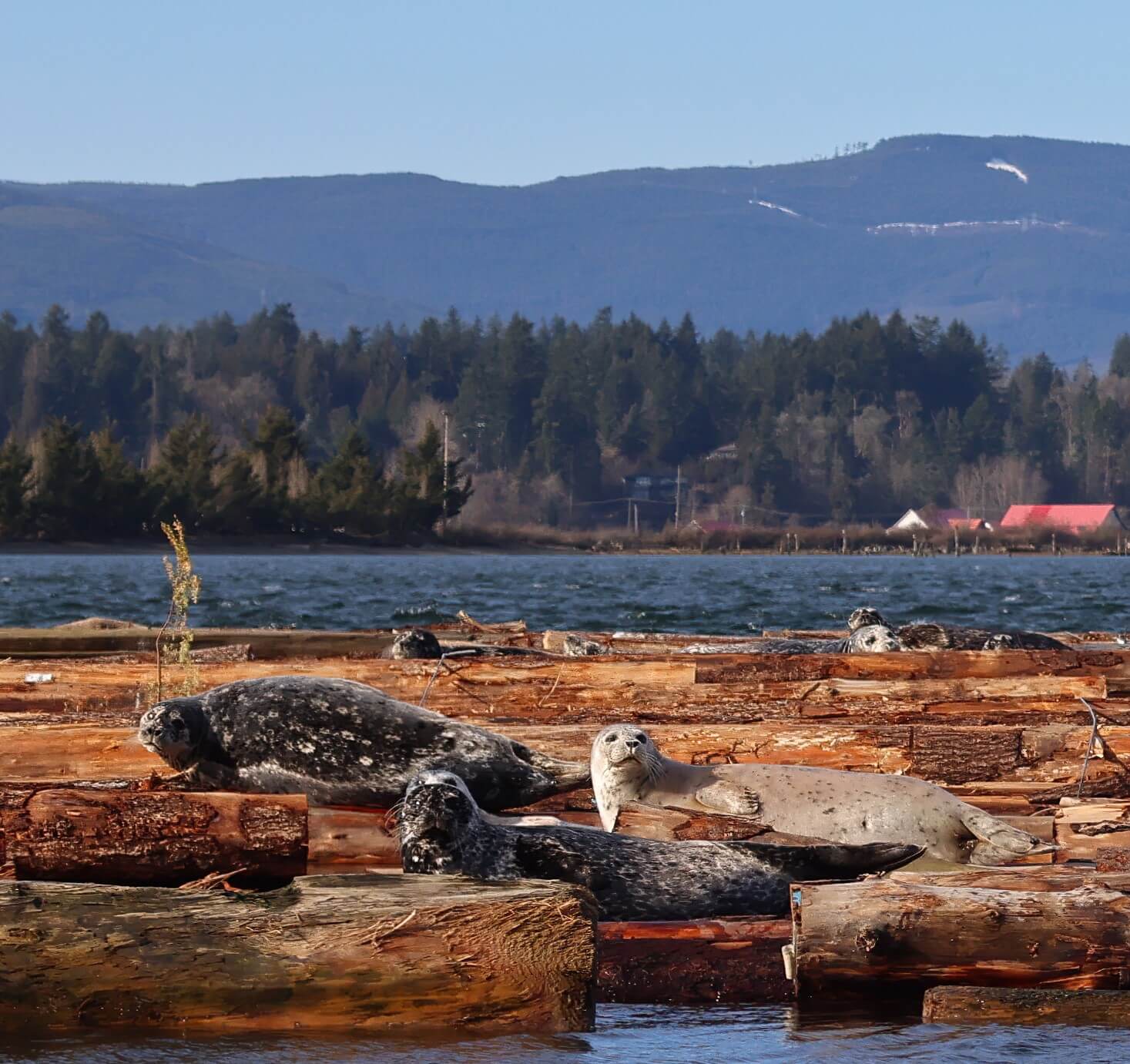
Pacific harbour seals perched on a log boom in Cowichan Bay. (Mitch Miller)
One SSMSP study indicated that seals consume up to 43 per cent of juvenile Chinook as they migrate through the Strait of Georgia.
Harbour seals may utilize log structures as platforms to assist in their predation of fish, making salmon highly vulnerable along their crucial migration corridors. Although salmon and seals have coexisted in equilibrium in the past, human activities such as log booms may be shifting this balance.
The Cowichan Tribes and British Columbia Conservation Foundation (BCCF), with support from the University of Victoria and PSF, are studying the effects of log booms in the Cowichan Bay Estuary on the survival of returning adult Chinook salmon.
“Quw’utsun elders tell us how plentiful Chinook salmon used to be at a time when we harvested them using only spears and weirs,” says Cowichan Tribes Chief Lydia Hwitsum. “Cowichan Tribes is feeling the immense pressure to study Cowichan River Chinook salmon now, while we still have them to study.”
The multi-year project uses acoustic and passive integrated transponder (PIT) tags and their associated receivers and antennas to track the movement of returning adult Chinook salmon in Cowichan Bay and the lower river during the fall. By tracking tagged Chinook that migrate beyond the lower river, survival rates can be calculated. To better understand the impacts of log boom presence on salmon, the survival rates in years when log booms are present are compared to 2019, when the booms were absent. The study also assesses different environmental factors like flows and temperatures and human-influenced factors like vessel noise and fishing.
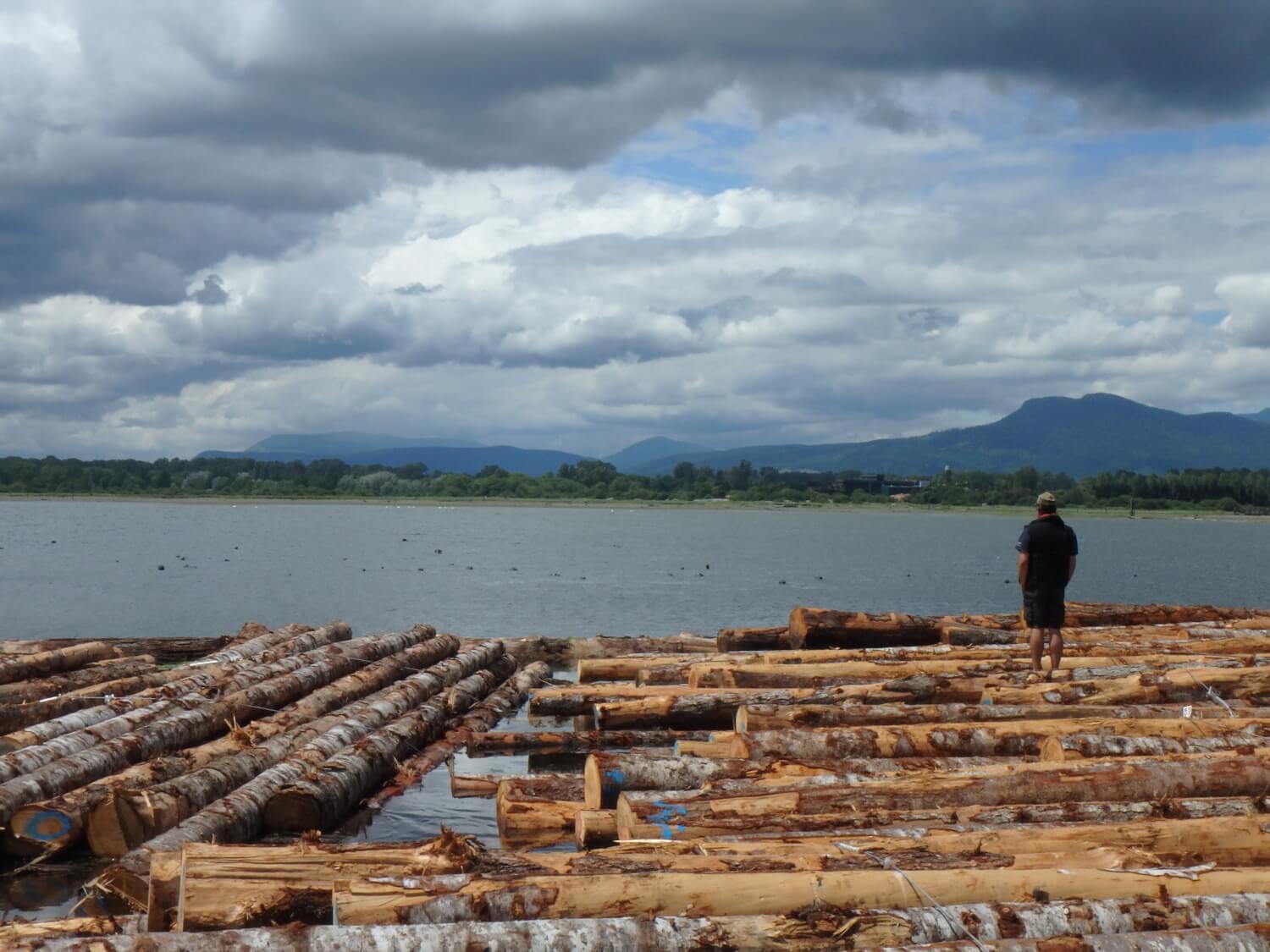
A log boom in Cowichan Bay. (Jamieson Atkinson)
Early results of the ongoing study indicate that log booms may amplify seal predation efficiency on adult Chinook in Cowichan Bay and negatively influence salmon survival. There is strong evidence that the bay and estuary represent a survival bottleneck where the Chinook are susceptible to predation.
Based on variation in river flows during sample years, the results also reiterate the importance of early fall river flows from the Cowichan Lake weir to assist fish movement into the upper river and away from lower river and estuary predation.
A Best Management Practices guide for log booming activities in Cowichan Bay, currently in development, will strive to reduce the negative impacts log booms have on returning Chinook and the ecosystem health of the entire estuary. Recommendations may include removing log booms during the fall migration and maintaining river flow above certain thresholds to improve Chinook survival.
“With salmon stocks declining, we need to start looking at what kinds of things we as humans can do to help alleviate some of the pressure and different stressors that are being put on these critical populations,” says Kelsie Murchy, a PhD candidate at the University of Victoria who is an integral part of the project’s team.
The research team recently completed the 2022 field season and is currently analyzing the data. Funding applications have been submitted to continue the study for an additional three years with potential to extend the project to other river systems on Vancouver Island.
PSF has contributed more than $94,000 to help advance this study.

